New partnership announced with Borderless
Sona and Borderless announce an exciting partnership.
Building a staff schedule couldn’t be easier.
Reduce payroll errors with real-time T&A.
Fill 50% more shifts with your own employees.
Ensure shifts are covered even if you're understaffed.
Manage absence requests and approvals.
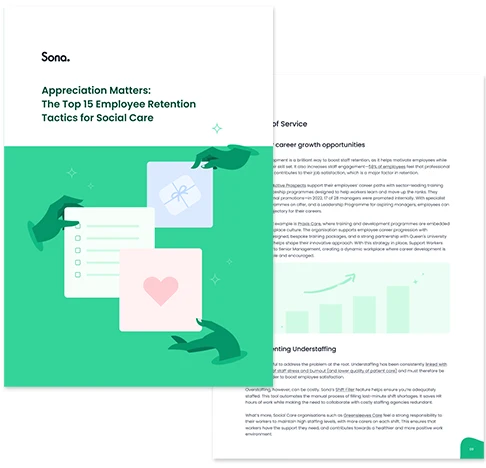
Practical ways to boost team morale with proven examples from across the sector.
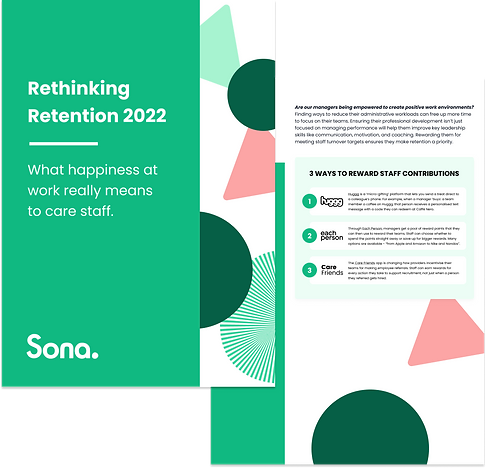
Find out what care employees say matters to them most at work.
Search and view employees with customised permission levels.
Key employment information all in one place.
Store visas, professional certifications and more with easy access.
Control personal and operational details of your staff.
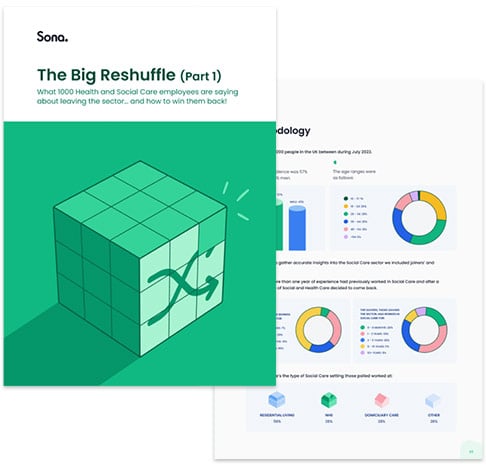
Why are people leaving Social Care, and where are they going?
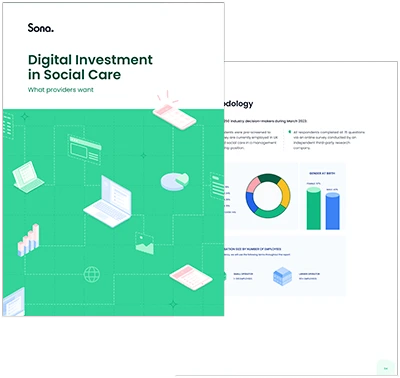
We asked 250 Social Care leaders about their attitudes towards digitisation and their plans for the next 12 months...
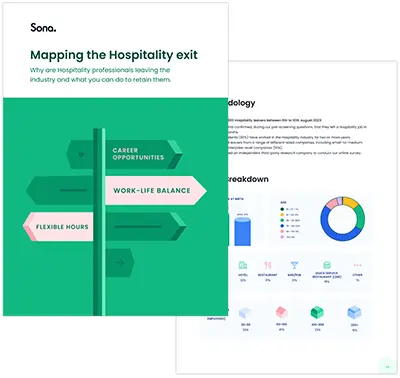
Why are Hospitality workers leaving the industry, and what can you do to retain them?
Share updates with a single click.

Staff can see relevant messages in one place.
Request post-shift feedback from staff.
Recognise staff contributions by sending them praise.
Identify staff at risk of churning.
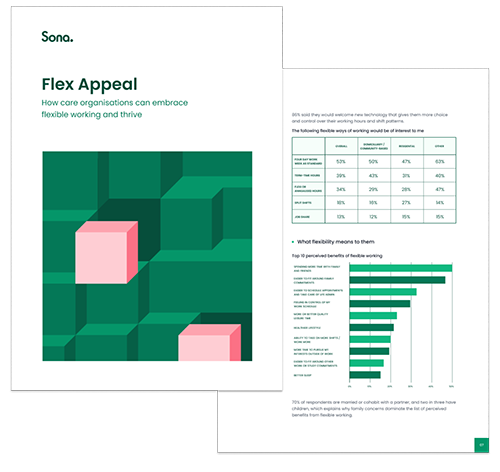
How care organisations can embrace flexible working and thrive.
Maintain quality of care and reduce costs.
Maximise profitability through AI-powered forecasting & scheduling.
Elevate your operational efficiency and guest satisfaction.
Streamline operations across sites.
Developed alongside Social Care experts with decades of combined experience.
See why we are the leading user-friendly, end-to-end platform that prioritises both efficiency and wellbeing.
The Sona Partner Network is an ecosystem of solution experts and complementary technologies.
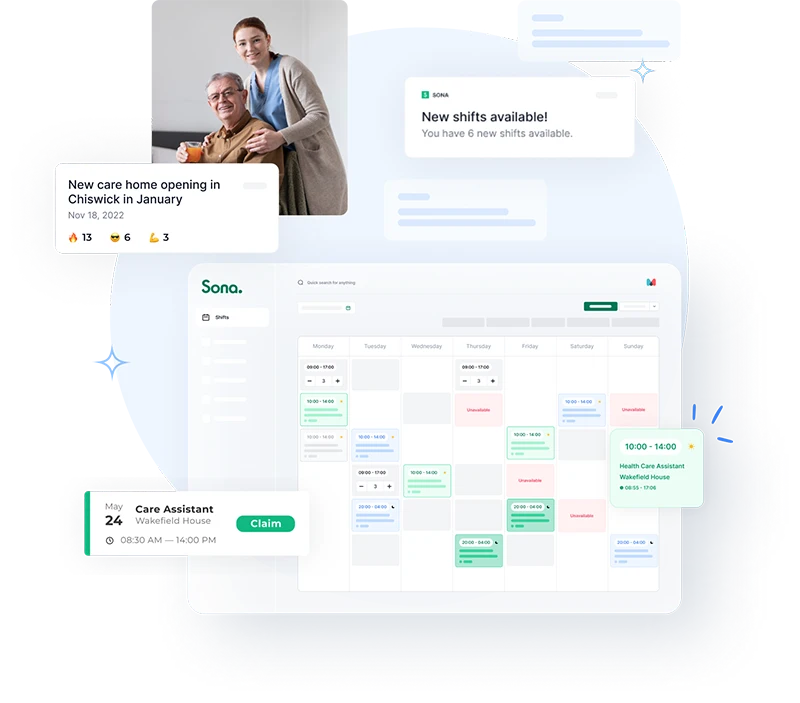
Give staff greater visibility of shifts available to work, with a simple "shift claim" process to increase their income.
Improve employee engagement and retention with a seamless employee communication platform.
Happier staff provide greater customer experiences, which in turn drives return rates, revenues and recommendations.
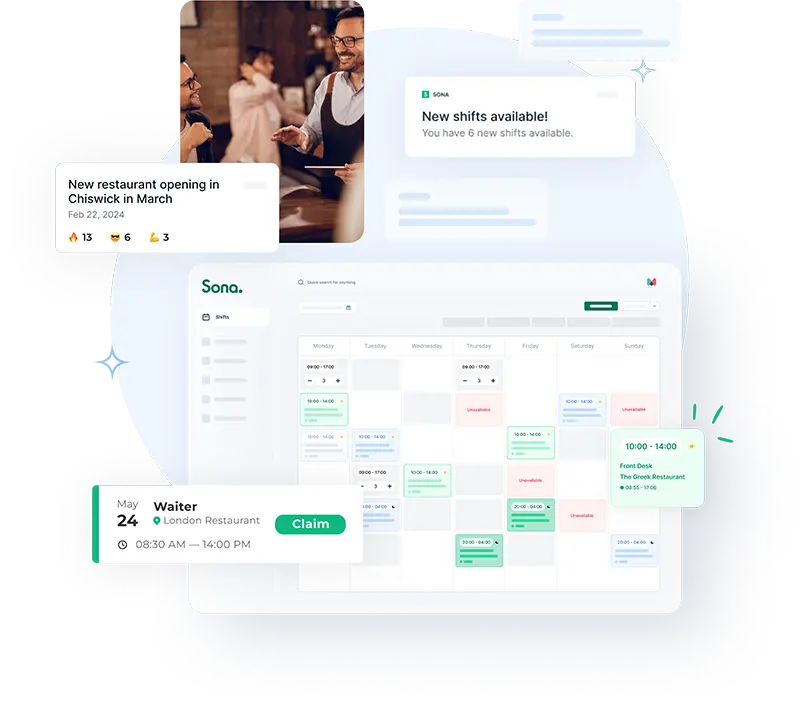
Give staff greater visibility of shifts available to work, with a simple "shift claim" process to increase their income.
Improve employee engagement and retention with a seamless employee communication platform.
Happier staff provide greater customer experiences, which in turn drives return rates, revenues and recommendations.
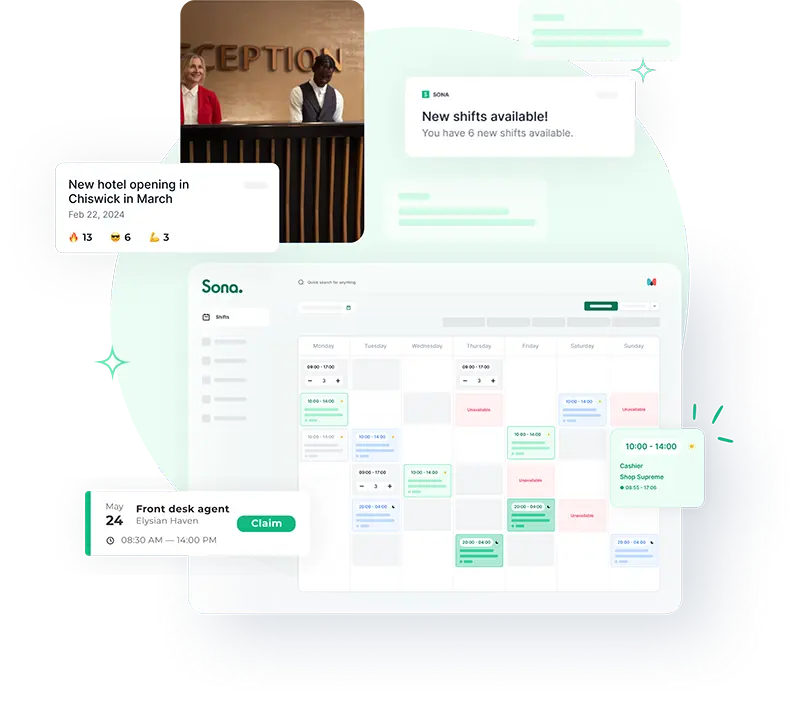
Meet the Sona team online with our webinar series or in-person at an event near you.
New research, insights, and strategies for frontline leaders.
Downloadable templates, reports and guides from Sona.
Stay up to date with the latest Sona news and research.
Learn how our customers are transforming their people operations.
| 3 min read
Sona and Borderless announce an exciting partnership.
| 2 min read
Sona and Found by Lottie announce an exciting partnership.
| 4 min read
Remove operational errors, drive efficiency, and help your team spend less time on admin with a unified solution.
PUBLISHED: February 2025
Download the report to learn how hospitality operators are embracing AI challenges and opportunities in 2025.
PUBLISHED: January 2025
Reveal the most important metrics in 2025!
PUBLISHED: December 2024
This infosheet is packed with practical insights to drive high-quality, low-regret WFM purchases.Despite the importance of the sector to society, working in social care can often feel like a thankless task - 92% of staff want more recognition. But providers have the power to turn this around.
3 minute read
Low wages, high burnout, and difficult working conditions are partly to blame. They're the common results of insufficient funding and high staff turnover.
The recent CQC State of Care Report concluded that these factors are highly prevalent across the U.K. Social Care system, with casualties such as staff morale, engagement and retention, and even quality of patient care.
However, a lack of employee appreciation is also a driving force. With just 21% of care workers receiving regular recognition from their employers, it's time to take action.
Not all the solutions are complex. Let's take a look at one in particular: employee recognition programmes.
 What is an employee recognition programme?
What is an employee recognition programme?Employee recognition programmes are a way of helping employees feel valued in the workplace. In the care sector, they drive up employee and patient satisfaction by ensuring hard work does not go unnoticed.
An employee recognition strategy needs to be holistic. There are many ways to identify and create opportunities to show appreciation to care staff, such as:
Rewards do not have to be monetary — a common concern across a sector that needs to keep a close eye on costs. Prizes such as 'Employee of the Month' or 'Highest Attendance Record' or a landmark 'Years of Service' award can mean just as much.
More than 2 in 5 staff working in care have left a job because they didn't feel valued. It's clear that employee recognition programmes are no longer simply 'nice to have'; they're a must for care providers. Let's look at three crucial reasons why.
Once pay is excluded, lack of appreciation is the top reason why care workers leave the sector, creating a vicious cycle.
High staff turnover has significant knock-on effects for care providers, significantly detracting from employee satisfaction and even affecting quality of care.
An employee recognition programme can create a workplace culture that employees are proud to be part of, increasing recruitment and retention: staff churn is 31% lower at companies with a 'recognition culture.'
An employee recognition programme can positively affect performance and productivity.
Feelings of demotivation mean that 49% of staff are less productive, and 39% produce lower-quality work as a result.
Conversely, staff who regularly receive recognition for their work are twice as likely to embrace innovative thinking and generally go above and beyond, which can make a world of difference to the quality of care given.
Implementing an employee recognition programme is a highly effective way of ensuring that a culture of appreciation is present across all areas and levels of your company.
Happier, more motivated staff lower your operating costs. Gallup found that, in the U.S., the total cost of disengaged employees is somewhere between $450 and $550 billion a year. Companies that rank highly for employee experience generate up to 25% more profit than their competitors.
With easy-to-use, company-wide workforce management tools such as Sona, managers can easily show appreciation to their employees.
Using a wide variety of features such as personalised messages of praise, simple feedback loops, reminders for well-being check-ins, and shout-outs on a shared newsfeed, recognition is literally embedded into our software.
The care sector's current workforce crisis needs quick fixes and long-term solutions. Employee recognition programmes can fill this role.
Urgent steps must be taken to ensure all care employees feel appreciated, particularly given the incredible value of their work.
Appreciation truly matters — download our research report on employee recognition to understand why in even more detail.
If you liked this article, why not subscribe to our newsletter to get the latest news and views delivered straight to your inbox?
6 min read
The care industry's crisis needs to be solved. One of the solutions – maybe the most important – is improving staff retention. Learn why it’s important and how to do it.
7 min read
Here are the main takeaways from Sona’s webinar, 'Does Social Care need a new culture of recognition?'
2 min read
According to our latest research, 79% of leavers are open to working in health and social care again in the future. Here are some practical steps health and social care organisations can take to reduce preventable labour turnover.